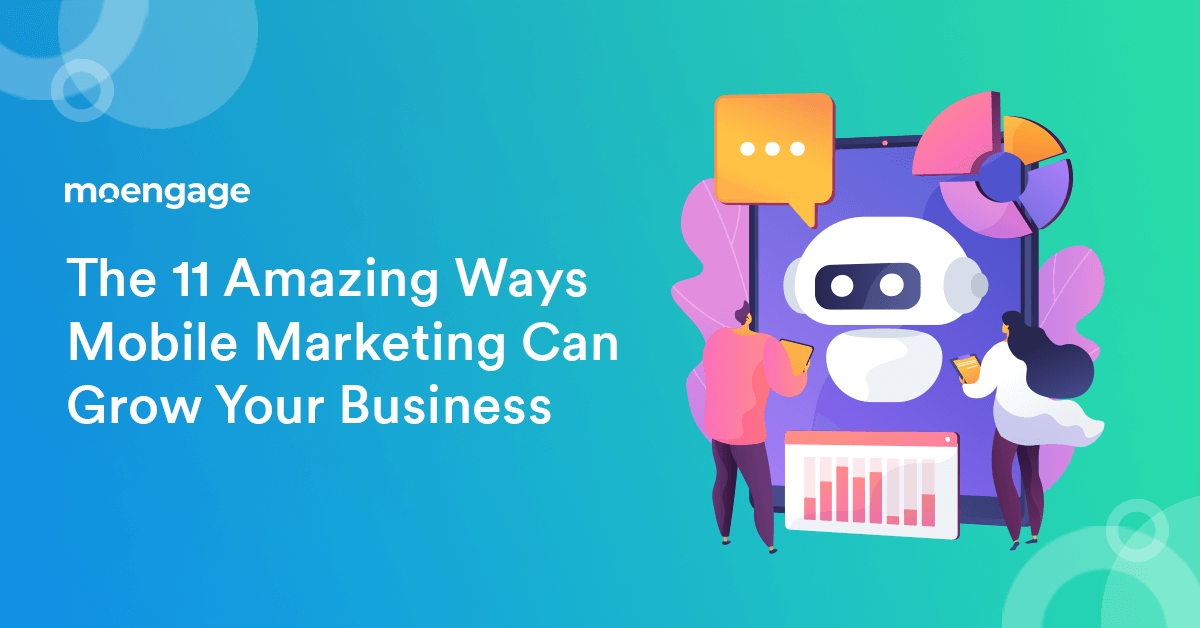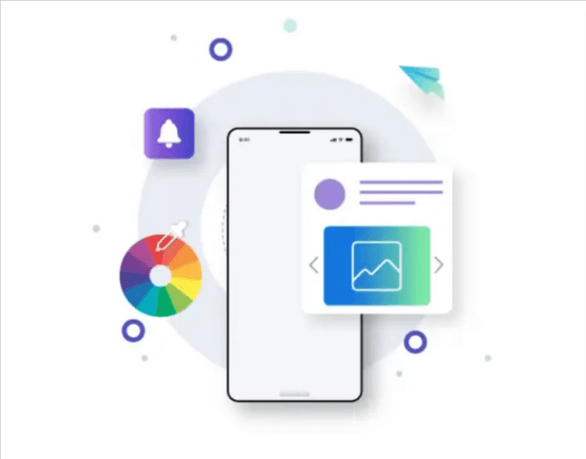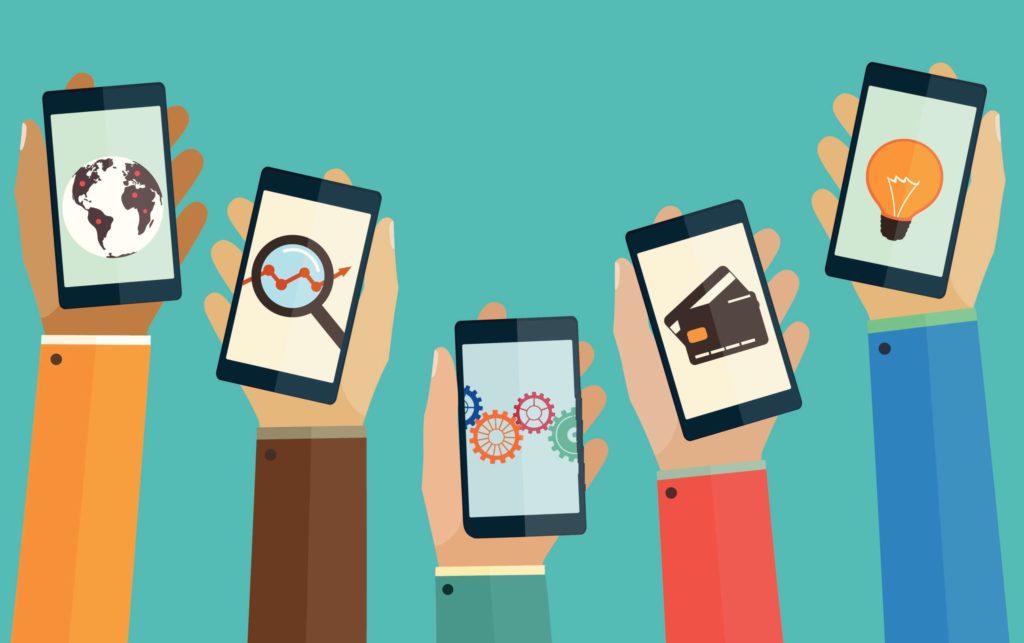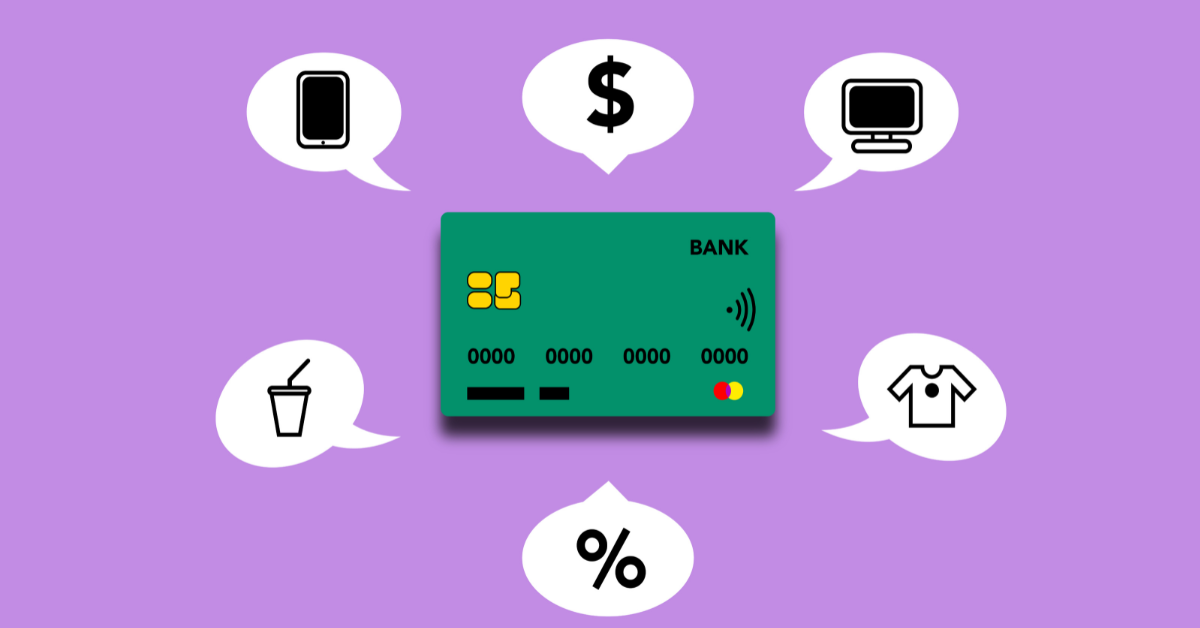11 Remarkable Benefits of Mobile Marketing

A new study shows that the average smartphone user checks their phone 63 times a day. A staggering 83% will check their devices while with friends and family, with the average time spent on smartphones being 171 minutes a day.
That is how addicted we are to smartphones. For marketers, therefore, it’s essential to have a robust mobile marketing strategy.
For those who are still wondering about its advantages, here are 11 tried-and-tested as well as powerful benefits of mobile marketing that you simply can’t ignore.
1. Cost-effectiveness
Let’s start with the big one. When compared with other methods of marketing, mobile marketing is very cost-effective. Print, TV, and outdoor, for example, have significantly higher production and purchase costs. The precisely targeted nature of mobile marketing means that every dollar you spend works that much harder. Further, because mobile marketing offers a variety of communication channels, you can pick and choose the ones that fit your budget.
Take the case of KLM. They carried out a mobile campaign to encourage consumers to book flights on their mobile devices. The campaign used a variety of approaches, such as offering lounge benefits as well as instructional videos. The campaign ran for only three weeks – with great results. There was a 17% increase in visits to KLM’s mobile website, which led to a 34% increase in bookings and a 38% increase in mobile revenue.

2. Mobile personalization

As a marketer, you already know that messages that are personalized have a greater chance of recall and making consumers take action. A survey by a leading digital marketing and analytics agency revealed that 7 out of 10 consumers say they prefer content and ads that are tailored to their personal interests. Mobile marketing excels in this attribute.
It’s not just content but also push notifications that can be personalized. With the gathering of permitted data, user segmentation becomes easier, leading to powerful campaigns. For example, Toyota USA created 100,000 different possible video advertisements for a hybrid vehicle, all personalized to the viewer’s taste based on insights from Facebook. Read more about it here.
3. Location-based targeting
An important part of personalization is the use of location services. This can be a great advantage for marketers because people are so attached to their smartphones. Take geofencing, which leads to notifications, alerts, or other offers when a device enters a specific location – for example, a sports stadium or a shopping mall.
Such location targeting makes your marketing message much more personal, focused, and likely to be noticed. According to one report, 70 percent of all mobile campaigns from quick-service restaurants leveraged location.
4. Immediacy

When your online marketing messages are sent to desktops or laptops, it could be that the consumer doesn’t get the chance to see them for some time. With a smartphone, consumer behavior is different. Mobile push notifications can take advantage of this. For example, a news app can instantly send out relevant, breaking news. Or a retail store can announce a one-day sale.
Important alerts that respond to consumer actions are another way to use this aspect of immediacy. This is especially important for those in fintech. Lloyds TSB, the first bank to offer text alerts including balance information and details of customers’ last five transactions, is positive about the usefulness of mobile as a service channel. “It’s about offering a choice of how the customer can communicate with the bank,” says Anita Hockin, head of internet at Lloyds TSB. Find out more on how to position an online banking app as the hub around which you build an omnichannel consumer engagement strategy.
5. Instant, real-time transactions

For e-retailers, mobile marketing offers the unbeatable benefit of promoting instant transactions. You can satisfy consumer needs immediately. Such transactions could also be offered in-store. Recent research shows that 39% of consumers say they would use mobile payments more if more stores and apps accepted them, while 61% say that they are now replacing cash transactions with mobile payments.
The convenience of mobile shopping, too, is something more and more consumers have come to depend on. Catbird, a jewelry company, created a custom mobile commerce theme that was independent of the desktop store, to empower a seamless, omnichannel experience. This led to an over 45 percent growth in mobile transactions.
6. Omnichannel reach

Mobile marketing may seem like one unified process. But the term actually encompasses multiple channels, giving you many effective ways to reach consumers. The majority of website traffic nowadays comes from mobile phones, for instance. Then, there are mobile apps, for a custom-designed experience. Or look at text messages, which have an average open rate of 98%.
There are other worthwhile ways to reach out, too. QR codes in outdoor locations or in print can be scanned on mobile phones for further offers and information, to take one more example. Depending on your prospect’s behavior and history, you will be able to create a mobile strategy that reaches them with the right message at the right place at the right time. Since Google recently listed push notifications as an important marketing trend that cannot be ignored by marketers anymore, here’s a helpful and in-depth guide.
7. Harnessing social media
There are over 3.5 billion social media users worldwide, and the number is growing daily. In 2020, the average daily social media usage of internet users worldwide reached 145 minutes per day. A majority of this is on smartphones. Clearly, a mobile marketing strategy that incorporates social media makes a lot of sense. Social media can be used to enhance existing marketing efforts, or it can also be used for news, offers, and separate campaigns.
Take the case of Sony India, which used Facebook and YouTube for building and nurturing its audiences. It focused on integrating its programs on social media, TVC, and product launches for effective engagement. The results: their fan base increased from 500000 to over 2 million within 12 months of its presence on Facebook. And its YouTube videos brought more than 1300 fans daily to its Facebook page. For other media and entertainment firms looking to navigate ups and downs, here’s a mobile marketing resource for acquisition, engagement, and retention.
8. Shareability and Virality
The aspect of virality when it comes to mobile marketing is connected to social media use as well as other channels. Some of the ways in which marketing messages go viral is by an interesting take on topical events, appropriate humor, or just something that is extremely unusual. Sometimes, an action associated with a cause works, as was the case with the famous ALS Ice Bucket Challenge, with 2.4 million videos posted to Facebook and 28 million people uploading, liking, or commenting on an ice-bucket-related video.
To turn to shareability, it is a built-in part of a consumer’s mobile phone experience, which savvy marketers try to enhance in various ways. Free exposure, more sign-ups, and positive word of mouth are just some of the benefits. Mobile marketers should make it easy to share their messages through apps or forwarding functions on other channels. If there is an added incentive, consumers will be more likely to share – the cloud storage service Dropbox, for example, told users that every friend they invite would increase their own storage space, as well as their friend’s, by 500 MB.
9. Tracking and Analytics
Yet another powerful and advantageous feature of mobile marketing is the ability to track user responses with ease. This gives you more data and more insights to act upon. Metrics such as acquisition cost, lifetime value, and user engagement are important signals to check on the health of your campaign and to make the necessary course corrections. In turn, this leads to efficient spending of the campaign budget.
10. Boost search engine rankings
Increasingly, more and more consumers use a mobile device instead of a desktop computer to carry out a search and otherwise browse the Internet. A mobile-optimized site is essential. That means elements like page speed, design, and relevant add-ons. Add to this a proper SEO effort and social media mentions, and the net result is a higher ranking on search engines. This, of course, means more visibility and hits.
11. Staying ahead of the competition
Despite the clear advantages of mobile marketing, a recent survey found that almost 24% of the top 1 million most popular websites in the world are not mobile-friendly. Another study revealed that 60% of smaller businesses in the population sample have older websites that are also not mobile-friendly. For the fintech, retail, consumer service, and other businesses on that list, it means they’re losing out on a huge chunk of consumer attention and revenue. In fact, 61 percent of consumers say they are more likely to purchase from mobile-friendly sites. A mobile marketing strategy to attract such people and more means that you can stay a step ahead of the competition and establish long-term loyalty and a stronger position than the rest.
The importance of mobile devices in the consumer’s life is going to exponentially grow in the years to come. Those marketers who have a robust mobile strategy in place will be able to reap the benefits, as well as get the first-mover advantage when it comes to future technological advances.












